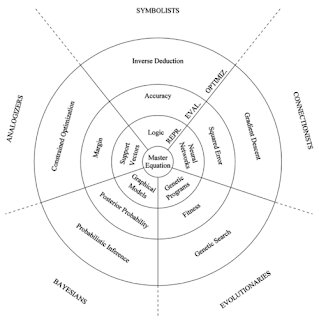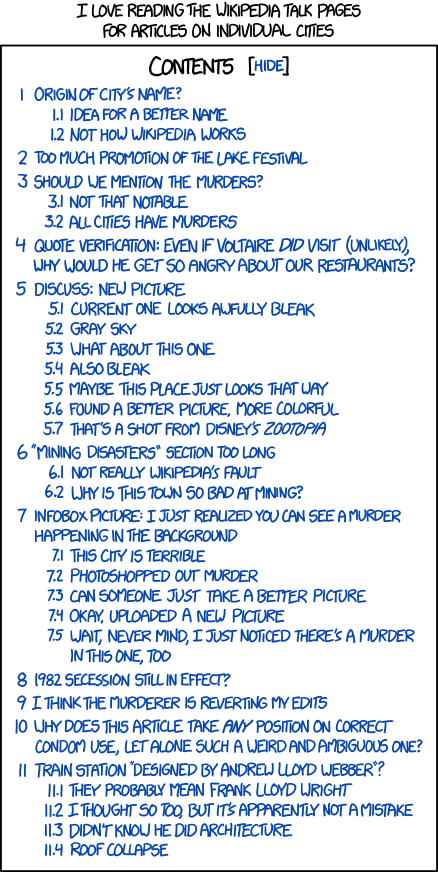As you may remember from an earlier post on this blog, Discrete Analysis is a new mathematics journal that runs just like any other journal except in one respect: the articles we publish live on the arXiv. This is supposed to highlight the fact that in the internet age, and in particular in an age when it is becoming routine for mathematicians to deposit their articles on the arXiv before they submit them to journals, the only important function left for journals is organizing peer review. Since this is done through the voluntary work of academics, it should in principle be possible to run a journal for almost nothing. The legacy publishers (as they are sometimes called) frequently call people naive for suggesting this, so it is important to have actual examples to prove it, and Discrete Analysis is set up to be one such example. Its website goes live today.
We have decided to splash out and use a publishing platform called Scholastica. Scholastica was founded in 2011 by some University of Chicago graduates who wanted to disrupt the current state of affairs in academic publishing by making it very easy to create electronic journals. I say “splash out” because they charge $10 per submission, whereas there are other ways of creating electronic journals that are free. But we have got a lot for that $10, as I shall explain later in this post, and the charge compares favourably, to put it mildly, with the article processing charges levied by more traditional publishers. (An example: if you have had an article accepted by the Elsevier journal Advances in Mathematics, the price you need to pay to make that article open access is $1500; the same amount of money would cover 100 submissions to Discrete Analysis. I didn’t say 150 because there are some small further costs we incur, such as a subscription to CrossRef, which enables us to issue DOIs to our articles.) Most importantly, we do not pass on even this $10 charge to authors, as we have a small fund that covers it.
Now that we have been handling submissions for almost six months, we have been forced to make decisions that leave us with a rather clearer idea about what the scope and standards of the journal are. As far as the scope is concerned, we want to be reasonably broad. For example, the analysis in the paper by Tuomas Hytönen, Sean Li and Assaf Naor is not really discrete in any useful sense, but we judged it to have a similar spirit to the kind of papers that fit the title of the journal more obviously by treating discrete structures using analytic tools. Our rough policy is that if a paper is good enough, then we will not be too worried about whether it has the right sort of subject matter, as long as it isn’t in an area that is completely foreign to the editorial board.
As for the quality, we have been surprised and gratified by the high standard of submissions we have received, which has allowed us to set a high bar, turn away some perfectly respectable papers, and establish Discrete Analysis as a distinctly good journal.
That is an important part of our mission, because we want to show that the cheapness of running the journal is completely compatible with high quality. And that does not just mean mathematical quality. One thing I hope you will notice is that the journal’s website is far better designed than almost any other website of a mathematics journal. This design was done by the Scholastica team for no charge (I think they see it as an investment, since they would like to attract more journals to their platform), and it satisfies various requirements I felt strongly about: for example, that it should be attractive to look at, that one should be able to explore the content of the journal without undue clicking and loading of new pages, and that it would be able to handle basic LaTeX. But it has other features that I did not think of, such as having an image associated with each article (which seems pointless until you actually look at the site and see how the image makes it easier to browse and more tempting to find out about the article) and making the site work well on your phone as well as your laptop. If you compare it with, say, the website of Forum of Mathematics, Sigma, it’s like comparing a Rolls Royce with a Trabant, except that someone has mischievously exchanged the price tags. (Let me add here that there are many good things about Forum of Mathematics. In particular, its editorial practices have been a strong influence on those of Discrete Analysis. And it is far from alone in having an unimaginative and inconvenient website.)
Since I am keen to promote the arXiv overlay model, I was also particularly concerned that Discrete Analysis should not be perceived as “just like a normal journal, but without X, Y and Z”. Rather, I wanted it to be better than a normal journal in important respects (and at least equal to a normal journal in all respects that anyone actually cares about). If you visit the website, you will notice that each article gives you an option to click on the words “Editorial introduction”. If you do so, then up comes a description of the article (not on a new webpage, I hasten to add), which sets it in some kind of context and helps you to judge whether you might want to go ahead and read it on the arXiv.
There are at least two reasons for doing this. One is that if the website were nothing but a list of links, then there would be a danger that it would seem a bit pointless: about the only reason to visit it would be to check that when an author claims to have been published by us, then that is actually true. But with article descriptions and a well-designed website, one can actually browse the journal. Browsing is something I used to enjoy doing back when print journals were all that there were, but it is quite a lot harder when everything is electronic. (Some websites try to interest you in related content, but it seems to be chosen by rather unsophisticated algorithms, and in any case is not what I am talking about — I mean the less focused kind of browsing where you stumble on an interesting paper that neither you nor an algorithm based on your browsing history would ever have thought of looking at.)
A second reason is that having these introductions goes a small way towards dealing with a serious objection to the current system of peer review, which is that a great deal of valuable information never gets made public. As an editor, I sometimes get to read very interesting information that puts a submitted article into a context that I didn’t know about. All the reader of the journal gets is one bit of information: that the article was accepted rather than rejected. (One could argue that it isn’t even one bit, since we do not learn which articles have been rejected.) Of course, under cover of privacy and anonymity, referees can also make remarks that one would not want to make public, but with article descriptions we don’t have to. We can simply write the descriptions using information from the article itself, prior knowledge, remarks made by the referees, remarks made by editors, relevant facts discovered from the internet, and so on. And how this information is selected and combined can vary from article to article, so the reader won’t know whether any particular piece of information was part of a referee’s report.
Thus, Discrete Analysis is offering services that other journals do not offer. Here’s another one. Suppose you submit an article to Discrete Analysis and we accept it. The next stage is for you to submit a revision to arXiv, taking account of the referee’s comments. Once that’s done, we make sure we have an editorial introduction and appropriate metadata in place, and publish it. But what if at some later date you suddenly realize that there is a shorter and more informative proof of Lemma 2.3? With the conventional publishing system, that’s basically just too bad: you’re stuck with the accepted version.
In a way that’s true for us too. The version that’s accepted becomes what people like to call the version of record, so that when people refer to your paper there won’t be any confusion about what exactly they are referring to. (This is important of course, though in my view the legacy publishers massively exaggerate its importance.) However, being an arXiv overlay journal allows us to reach a much more satisfactory compromise between having a fixed version of record and allowing updates. If you follow the link from the journal webpage to the article and the article has subsequently been updated, the arXiv page you link to will inform you that the version you are looking at is not the latest one. So without our having to do anything, since it happens automatically with the arXiv, readers get the best of both worlds. As an example, here is the arXiv page for a version of a preprint by Bourgain and Demeter (not submitted to Discrete Analysis). As you’ll see, the information that it is not the latest version is clearly highlighted in red.
Another feature of Discrete Analysis, but this one it shares with other purely electronic journals, is that we are not artificially constrained by the need to fill a certain number of pages per year. So you will not hear from us that we receive many more good articles than we can accept, or that your article, though excellent, is too long — we just have a standard we are aiming for and will accept all articles that we judge to reach it.
So if you have a good paper that could conceivably be within our scope, then why not submit it to us? Your paper will have some very good company (just look at the website if you don’t believe me). It will be properly promoted on a website that embraces what the internet has to offer rather than merely being a pale shadow of a paper journal. And you will be helping, in a small way, to bring about a change to the absurdly expensive and anachronistic system of academic publishing that we still have to put up with.



 A.M. "Marty" Stroud III,
A.M. "Marty" Stroud III, 


 The New Hampshire legislation is good, but in my opinion it doesn't go far enough. Juries should be empowered to punish the prosecution when they feel the prosecution is abusive or malicious....
The New Hampshire legislation is good, but in my opinion it doesn't go far enough. Juries should be empowered to punish the prosecution when they feel the prosecution is abusive or malicious....

 President Richard Nixon launched the War on Drugs for one specific reason: to decimate his perceived political enemies—the anti-war left, and black people.
President Richard Nixon launched the War on Drugs for one specific reason: to decimate his perceived political enemies—the anti-war left, and black people. 
 Imagine a world where a brief encounter between young people and strangers does not automatically warrant police involvement—or a news report.
Imagine a world where a brief encounter between young people and strangers does not automatically warrant police involvement—or a news report. Spy agency officials and lawyers are putting together a new set of rules that will allow the National Security Agency to share whatever information it garners from its extensive electronic surveillance efforts about American citizens with other law enforcement agencies,
Spy agency officials and lawyers are putting together a new set of rules that will allow the National Security Agency to share whatever information it garners from its extensive electronic surveillance efforts about American citizens with other law enforcement agencies,  on college campus and
on college campus and  Last week the Vermont Senate
Last week the Vermont Senate 
